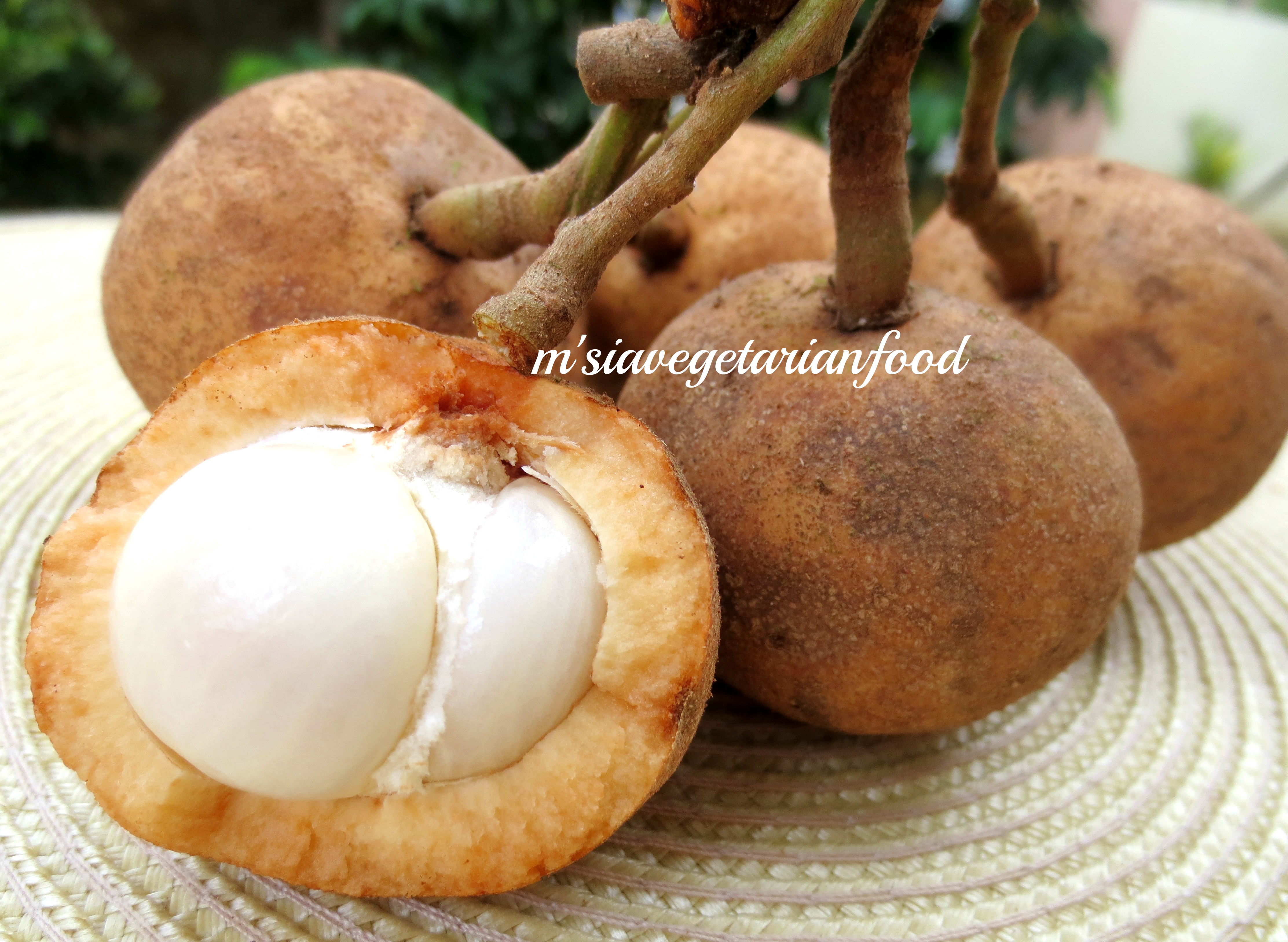Towards the end of the fruit season which normally falls on December, a few species of Tampoi/tampui fruits are always on display in various weekends and night markets. One of these is the Ucong(Iban), Belimbing Hutan(Malay), Belimbing Api or simply known as Red angular Tampoi. Its botanical name is Baccaurea angulata Merr.
All the tampoi fruits are indegenous to the land of Borneo and all are propagated from seeds. Though taste like mangosteen except they are more sour and the pulp not as fleshy, they belong to different families. Mangsteen belongs to the family of Clusiaceae and Tampoi belongs to the family of Euphorbiaceae(USDA listing).
I wonder why it is called Belimbing hutan which means wild star fruits. It is more like a tampoi than a star fruit. A star fruit has no thick skin or rind for example whilst all tampoi fruits have thick rind with pulp inside. In Chinese it is called 单贝果。

Its tree is medium-sized with a straight trunk of height about 10 m or taller. When the tree is heavily laden with fruits all over its trunk, it is really a spectacular sight to behold. The young maroon-colored fruits turn bright red when getting ripened, then the whole tree looks like it is on fire.

Each angular fruit is about 6 cm long and 3 cm wide with angular and attractive bright red skin with a tapering end. Its fleshy skin can be squeezed open by hands to reveal a white pearly pulp with three segments looking very much like rambai fruit pulp. Each segment is covered with a thin membrane.
Comparing to rambai which tastes plain sour, the red angular tampoi fruit is more popular because of its sourish-sweet to total sweet taste. It is also very juicy and after being chilled, is an excellent thirst quencher. The juice which can be made into a cordial has great commercial potential.
The thick and fleshy skin is also edible. Its sour taste makes it a great choice for pickles and jam making. The fruits and cut skin can be kept in freezer.

Another tampoi is tampoi paya which is equally attractive as the red angular tampoi. Tampoi Paya fruits are brown in colour and on ripening become reddish brown. The thick rind when is pressed open reveals a corn yellow pulp which is soft, sweet and fragrant. It is not as juicy as tampoi Merah but the pulp exhibit a pleasant fruity fragrance which makes it as attractive as the Belimbing hutan. Height of the tree is about 15 m. The round fruit is 3-5 cm wide, more or less.
The picture below shows fruits of Tampoi paya(Malay) a.k.a Puak Burung(Iban). Its Latin name is Baccaurea Bracteata Mull.

The picture below shows the fruits of Tampoi Nasi(Malay)or Puak(Iban). Its Latin name is Baccaureamacrocarpa Muell. The fruit is 3-6 cm wide, almost same size as tampoi paya. However, it is different from Tampoi paya in that it has pearly white, soft, sweet and juicy pulp with a fruity fragrance.

Equally interesting fruit is the mini tampoi a.k.a Kejirak/kejira which by its skin looks exactly like Buah Puak except that it is about half of its size which is the size of a ping pong ball and its pulp exhibit an attractive blood red colour. It has the highest Vitamin C content among all the tampoi fruits. Its botanical name is Baccaureapubera(Miq.) Mull.Arg.
Notice the blood red pulp of the Kejirak fruit in the picture below. The pulp looks like strawberry so as the taste.

Look at the buah Kejirak tree as shown in the picture below. They look exactly like buah Puak, don’t they ? In actual fact, the kejirak tastes better than the Puak.
The trees of all these tampoi trees grows up to 25 m high with abundant branches. All have flower spikes, except that of buah Kejirak, growing from the trunks and branches.

Their fruits appear in bundles on the trunk and branches. All four species have soft and juicy fresh that sticks to the seed. The pulp has three segments. The taste of the fruits is similar, sweet and tangy in flavour. Wine can be made from the juice and is called tuak tampoi.
For the nutritional value, please click table 1 for more information.

Buah kejira fruit tree laden with fruits
Oh yi oh…….yi oh yi oh yi oh…………
Tampoi is coming to town,
Let’s get ready to enjoy the fruits like orang utan . Yeah !
Copyright claim – Do not crop any pictures from malaysiavegetarianfood.com.Do not share our pictures without any watermarked signature on them.Excerpts from our articles to be credited to malaysiavegetarianfood.com.
